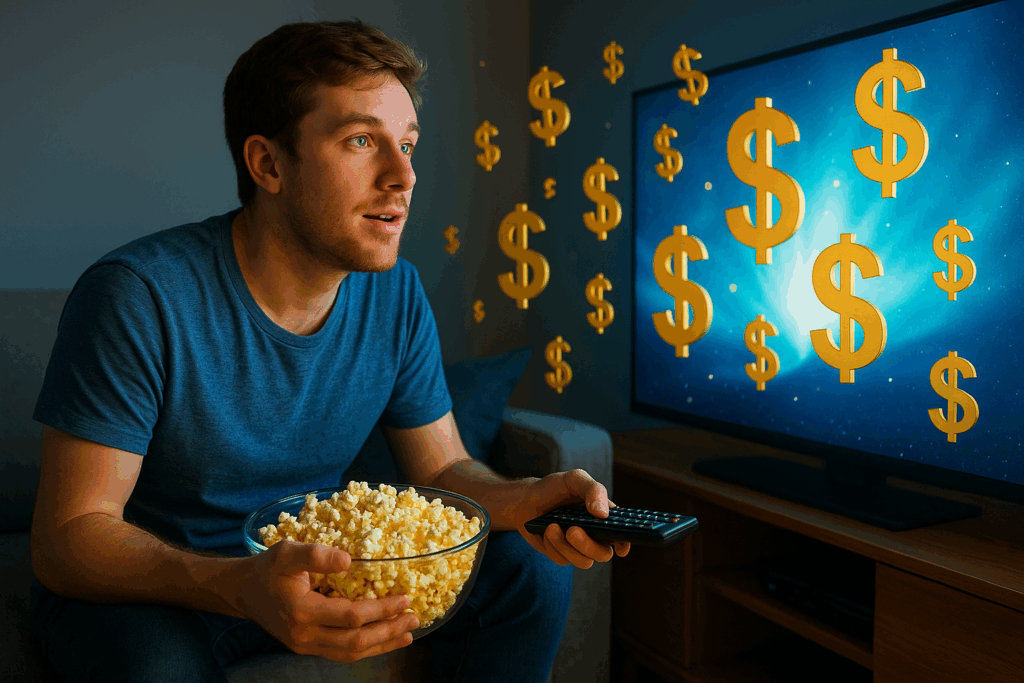Economic Stimulus, Reimagined for the Streaming Age
John Maynard Keynes once said that, in the long run, we’re all dead.
He probably didn’t anticipate that, in the short run, we’d all be binge-watching Stranger Things while ordering DoorDash and complaining about inflation on social media. But if the modern economy is a living organism, then streaming is its nervous system — twitching, scrolling, and occasionally buffering in confusion. And if Keynes were alive today, he’d probably have his own Netflix special titled “Deficits & Desire: How I Learned to Stop Worrying and Love Fiscal Policy.”
The Age of Infinite Content, Finite Attention
Back in Keynes’s day, stimulating the economy meant public works projects, investment in industry, and getting people back to work.
Now it means autoplay.
Today’s stimulus plan isn’t a New Deal — it’s a new season drop. When the economy stalls, just release another show about attractive people in mildly dystopian circumstances. Consumption resumes instantly.
The multiplier effect?
Every new series creates micro-economies of memes, podcasts, and late-night tweets. The GDP of gossip alone could probably fund universal healthcare.
The Streaming Multiplier Effect
Traditional economists talk about “aggregate demand.”
In 2025, that means the total number of people demanding “just one more episode.” Each binge triggers spending across the entire supply chain:
Electricity bills spike.
Snack industries boom.
Pajama sales soar.
Therapy appointments increase because the season finale was emotionally devastating.
That’s Keynesian stimulus in its purest form — a feedback loop of consumption, comfort, and mild existential dread.
Fiscal Policy, but Make It Cozy
Keynes believed that during recessions, governments should spend to kick-start demand. Well, in the streaming age, we’ve taken that advice — except the “government” is our credit card, and the “public sector” is our couch.
We’re injecting liquidity into the economy one monthly subscription at a time.
Netflix, Hulu, Disney+, Paramount+, Apple TV+, Peacock — Keynes would’ve called this “the fiscal multiplier,” but economists today call it “my God, when did I sign up for all these?”
The Employment Paradox of Binge Capitalism
Keynes worried about unemployment. We’ve solved that problem by never logging off.
Every viewer is now a micro-worker — reviewing, rating, tweeting, producing free promotional content. We don’t just watch; we participate in the grand stimulus experiment known as “content engagement.” And while the old economy had the invisible hand, ours has the autoplay countdown. Both guide behavior. One with markets, the other with mild anxiety and a five-second timer.
In Praise of Productive Laziness
Here’s the twist: Keynes actually predicted something like this.
He once wrote that by the 21st century, technological progress would make us so efficient that we’d only need to work 15 hours a week.
He was half right. We still work 40 — but we now spend another 25 pretending we’re “resting” while consuming entire cinematic universes in one weekend.
Maybe this is the leisure economy he imagined. A world where our greatest economic contribution is clicking “Next Episode.”
The Stimulus We Deserve
Forget tax rebates or infrastructure spending — the truest form of modern fiscal stimulus is a global release of The Mandalorian: Season Whatever Comes Next.
The economy surges.
The memes flow.
And for one brief, beautiful moment, we forget about interest rates and simply… chill.
In Other Words:
If Keynes taught us that spending keeps the economy alive, streaming taught us that procrastination keeps it interesting.
So go ahead — stimulate the system. You’re not being lazy.
You’re participating in macroeconomics.



